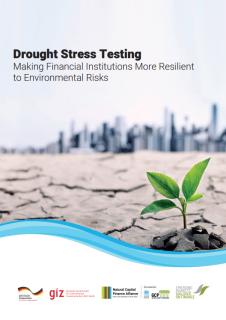
The Drought Stress Testing Tool allows financial institutions to see how incorporating drought scenarios changes the perception of risk in their own loan portfolios. Based on the catastrophe modelling framework that the insurance industry has used for 25 years, it looks at five drought scenarios in four countries – Brazil, China, Mexico and the US – to model the impact on 19 different industry sectors, the companies in those sectors and the likelihood that they will default on their loans.
The report, ‘Drought Stress Testing – Making Financial Institutions more Resilient to Environmental Risks’, showcases the tool in action by piloting the stress test on select, sample corporate lending portfolios of nine international financial institutions. Key findings from the report include: Extreme droughts could increase loan default losses 10-fold for specific portfolios that are most exposed to the effects of drought; Even when exposed to less extreme drought scenarios, most companies in the analysed portfolios see their credit ratings downgraded; The most affected sectors are water supply, agriculture and, in countries with high reliance upon hydroelectric energy, power generation; Significant impacts are also found in water-dependent sectors such as food and beverage production; Sectors that are less water-dependent but highly sensitive to general economic strength, such as petroleum refining, are also affected by widespread economic impacts of drought.
